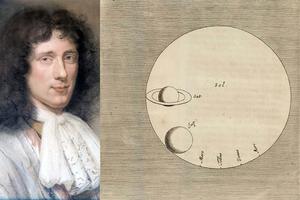
What Does Sunday Night’s Celestial Event Have to Do With Church History?
When you look at Jupiter and its moons, think of the role that those dots of light have played in Church history
 Search
SearchWhen you look at Jupiter and its moons, think of the role that those dots of light have played in Church history
If you can ever see Jupiter’s largest moons without a telescope, Sept. 25-26 will be the night.
PART IV: In the 1800s, the idea of a Plurality of Worlds was challenged by the fact that, just as stars are not all other suns, planets are not all other earths — and that even on those planets that might be other earths, inhabitants might not naturally spring out of the ground.
PART III: Well more than a century ago, science again started to directly challenge the idea of a Plurality of Worlds by demonstrating that stars are not all other suns
PART II: When thinkers like Fontenelle popularized the idea of a Plurality of Worlds in the 17th century, it grew to be widely supported by astronomers — but science offered nothing to support it, and offered easily reproducible results to question it.
PART I: When Giordano Bruno promoted the idea of a Plurality of Worlds, science was clearly against it, as Johannes Kepler took pains to point out.
Galileo did not prove that the Earth moves. He did not invent the telescope. He was not excommunicated, tortured or burned. So where do these ideas originate?

Subscriber Service CenterAlready a subscriber? Renew or manage your subscription or gift subscription.
My AccountSubscribe for just $49.95 $32.50!Start your Register subscription today.
Give a Gift SubscriptionBless friends, family or clergy with a gift of the Register.
Order NowOrder Bulk SubscriptionsGet a discount on 6 or more copies sent to your parish, organization or school.
Order NowSign-up for E-NewsletterGet Register Updates sent daily or weeklyto your inbox.
Sign Up




